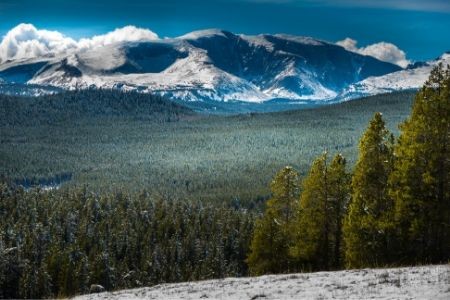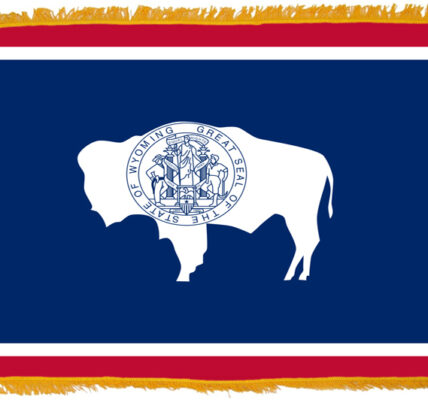By Angus M. Thuermer, WyoFile.com
U.S. Sen. John Barrasso is circulating a draft bill that’s drawing opposing reactions over its provisions to create five new Bureau of Land Management non-motorized wilderness areas in Wyoming.
The draft Wyoming Public Land Initiative Act of 2020 addresses only about 23% of the 758,044 federal wilderness study acres in Wyoming. The draft bill addresses 176,454 acres of BLM wilderness study areas and would protect less than 10% of that under the 1964 Wilderness Act, according to one analysis by a conservation group.
The bill does not resolve the fate of the other 77% of wilderness study areas in the state covering 581,590 acres. Federal managers must continue to protect those lands for their wilderness qualities until Congress acts.
The Wyoming County Commissioners Association’s 2015 Wyoming Public Lands Initiative was the foundation for the draft legislation. It engaged county-level committees for about three years to study the lands. Both the process and the resulting recommendations were contentious.
Barrasso’s draft bill would designate 17,892 acres of new wilderness in three counties. It would preserve as wilderness Carbon County’s Encampment River Canyon and Prospect Mountain. It would create two wilderness areas in Fremont County’s Sweetwater Canyon and preserve Washakie County’s Bobcat Draw. (see the list below)
The bill also would create 12 special management areas that ban drilling and mining but allow restricted motorized use in most cases, continued grazing and development of existing energy leases. Those special management areas would cover 108,244 acres, about 61% of the wilderness study areas that Barrasso’s bill considers.
“When you look at the numbers alone, it’s just a huge loss for conservation,” said Peggie DePasquale, associate director for the Wyoming Wilderness Association. That’s because much of the land would be released, or no longer be managed exclusively for its wilderness qualities. “It’s very much a release-oriented bill,” she said, that reduces protections for conserved and sensitive landscapes.
Conservationists wrote Barrasso saying they don’t want him to introduce the measure.
“Overall, the draft legislation has failed to build and represent a broad consensus of Wyoming constituent support, and without this, we see little hope for passage in Congress,” the Wyoming Outdoor Council wrote Barrasso. The letter asks Barrasso to “lay this bill aside.”
The Wyoming Wilderness Association wrote Barrasso that “[s]trong management for our Wyoming lands is possible, but this WPLI package is not our path forward.”
WyoFile didn’t receive a response from Barrasso’s office after seeking comment on the legislation. One affected county commissioner, however, told WyoFile he is glad to see movement on the wilderness study areas and that Barrasso’s bill represents his constituents’ views.
“It was a long collaborative effort with a very diverse group of individuals — almost two years on it,” said Travis Becker, chairman of the Fremont Board of County Commissioners. He was a member of that county’s WPLI study group that met at least monthly, he said. “We took public comment at every one of those meetings.”
Becker wouldn’t speculate on chances of the bill’s introduction or passage, but said “at least it’s moving.
“My hope at the very beginning was that this wouldn’t be something in futility,” he said. “I’m just tickled pink that [the bill] is actually trying to do something.”
In Fremont County, the bill would bifurcate the 4,520-acre Dubois Badlands Wilderness Study Area, creating separate conservation and motorized recreation areas. The latter would be designed to “maximize the use of motorized off-road vehicles.”
“I think it’s fantastic — a motor park,” Becker said. “There’s a reason that it’s needed. We have a segment of our population who cannot get to places without motorized help. I want to make sure [they] aren’t shut out.”
The bill also proposes less-than-wilderness status for the Whiskey Mountain Wilderness Study Area, a bighorn sheep refuge. The 487 acres are located “within the primary winter range for the largest herd of Rocky Mountain bighorn sheep in the coterminous United States,” according to one BLM description.
The Fremont wilderness study committee didn’t want to hamper sheep preservation by banning motorized use and other wildlife conservation tools, Becker said. Diseases have plagued the sheep at times.
“I didn’t want any sort of hindrance in the management of the herd,” Becker said. “I want to make sure the Game and Fish and the entities trying to look after the sheep have all the arrows in the quiver.”
The Wilderness Act prohibits development, motor- and bicycle travel. It defines wilderness as lands “where the earth and its community of life are untrammeled by man, where man himself is a visitor who does not remain.”
All told, county-level WPLI committees analyzed federal wilderness study areas in 10 of the 13 counties that contained them. Three of the 10 counties didn’t submit recommendations or submitted ones unacceptable to the WPLI program.
In addition to the wilderness designations and special management areas, the bill would release 16% of the acreage the measure considers for multiple use and potential development and would leave about 13% as study areas, according to the Wilderness Association analysis.
Barrasso’s bill addresses BLM wilderness study areas in seven counties that five separate committees studied. All but one of those groups, however, deviated from the WPLI guidelines, the Wyoming Wilderness Association wrote Barrasso.
Those WPLI guidelines stated that committee recommendations would be unanimous. But only Carbon County reached such a consensus, the wilderness association wrote.
“WPLI was a process built on consensus,” the association’s letter reads, “meaning the only committee recommendations deserving of its place in your bill is Carbon [County’s].” The association cites “controversy, unresolved conflict, and bad-acting,” by various committees and “a soured process” — all of which delegitimizes Barrasso’s measure, the letter says.
The association also decried lack of Native American participation, a topic the Outdoor Council seized on.
“Tribal perspectives were not incorporated into the process although a vast majority of these public lands are Indigenous cultural lands,” The Outdoor Council wrote. Wilderness study areas, because they have been managed to preserve their wilderness qualities, potentially contain “a high number of important heritage artifacts and sites of cultural importance,” the group wrote.
“This absence of [tribal] engagement was perhaps most egregious in Fremont County,” the letter to Barrasso reads, “where not only did commissioners decline to add a tribal representative to their committee, but did not follow through on their commitment to consult with both tribes on their recommendations.”
The Wilderness Association told WyoFile that it engaged in the WPLI process despite misgivings at the start of the process. “WWA was [wary] of the WPLI because it aimed at making federal land recommendations at a county level,” DePasquale wrote in an email.
The pledge to only make legislative recommendations if an entire committee voted in favor reassured the group. But most counties abandoned that standard.
The lack of national-level involvement remained troubling. “The lands addressed in this bill are federal lands belonging to all Americans,” the Wilderness Association wrote Barrasso, “yet so far the [draft bill] has only been informed by the county level process and has not considered the perspectives of all to whom these lands belong.”
Both conservation groups said they spent considerable resources on the WPLI process, but didn’t necessarily consider the investment a loss. The Outdoor Council urged Barrasso to “take stock of the many lessons learned during WPLI.”
Added the Wilderness Association, “We believe that some of [the WPLI] ideas and solutions will be central to … future processes that we look forward to.”
Barrasso WPLI draft bill
Proposed BLM management designations (and their counties)
Proposed wilderness:
Encampment River Canyon Wilderness (Carbon)
Prospect Mountain Wilderness (Carbon)
Upper Sweetwater Canyon Wilderness (Fremont)
Lower Sweetwater Canyon Wilderness (Fremont)
Bobcat Draw Wilderness (Washakie)
Proposed special management areas:
Bennett Mountain (Carbon)
Black Cat (Forest Service, North Platte River)
Sweetwater Rocks Complex (Fremont/Natrona)
Lankin Dome
Split Rock
Savage Peak
Miller Springs
Dubois Badlands National Conservation Area (Fremont)
Dubois Badlands Motorized Area (Fremont)
Fortification Creek (Johnson/Campbell)
Fraker (Gardner) Mountain (Johnson)
North Fork Powder River (Johnson)
Cedar Mountain (Hot Springs/Washakie)
Sweetwater Canyon (Fremont)
Bobcat Draw (Washakie/Hot Springs)
Proposed releases from WSA designation:
Honeycombs (Washakie)
Copper Mountain (Fremont)
Whiskey Mountain (Fremont)
Remain as study areas:
Ferris Mountain (Carbon)







